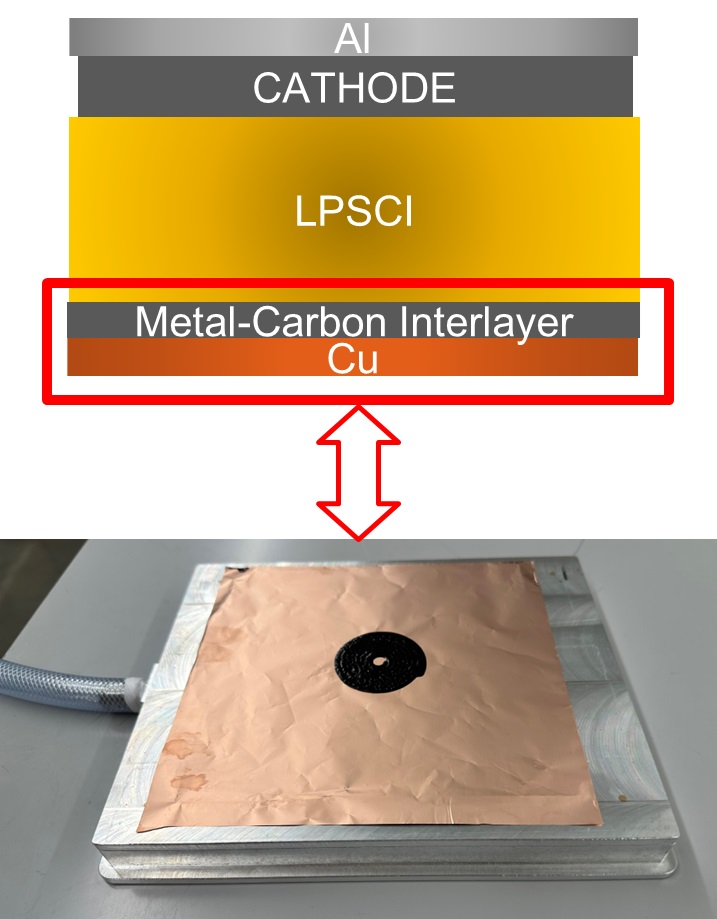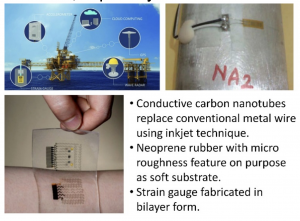Novel 3D printing
1) 3D battery printing
3D printing of anode-free solid-state batteries eliminate the need for Li metal as an anode substrate. PI’s preliminary work has demonstrated the preparation of sheet-type solid-state cells with configurations including a spray-coated carbon-based interlayer, sheet-type solid electrolyte, and sheet-type composite cathode. This prior work has provided valuable experience in slurry-processing battery materials and necessary stacking approaches. We aim to explore approaches for preparing printable slurries and develop a 3D printing setup for micro-scale complex heterostructure stacking. Additionally, new in situ characterization methods for controlling the printing process will be developed. By exploring new slurries and optimizing interface microstructures, we aim to enable scalable 3D printing technologies for solid-state batteries.

2) 3D printing of high-performance strain sensor
Stretchable strain sensors have shown great potential in various applications such as motion detection, health monitoring, and human-machine interfaces. However, these sensors still face challenges related to device sensitivity, linearity, hysteresis, stability, and reproducibility, in addition to their ability to stretch and conform to different surfaces.
Our objective is to address these limitations and improve the performance of stretchable strain sensors by focusing on engineering defect structures in the sensing materials. 3D printing technique offers an effective approach to modulate the physical properties of materials, especially those associated with mechanical responses.
